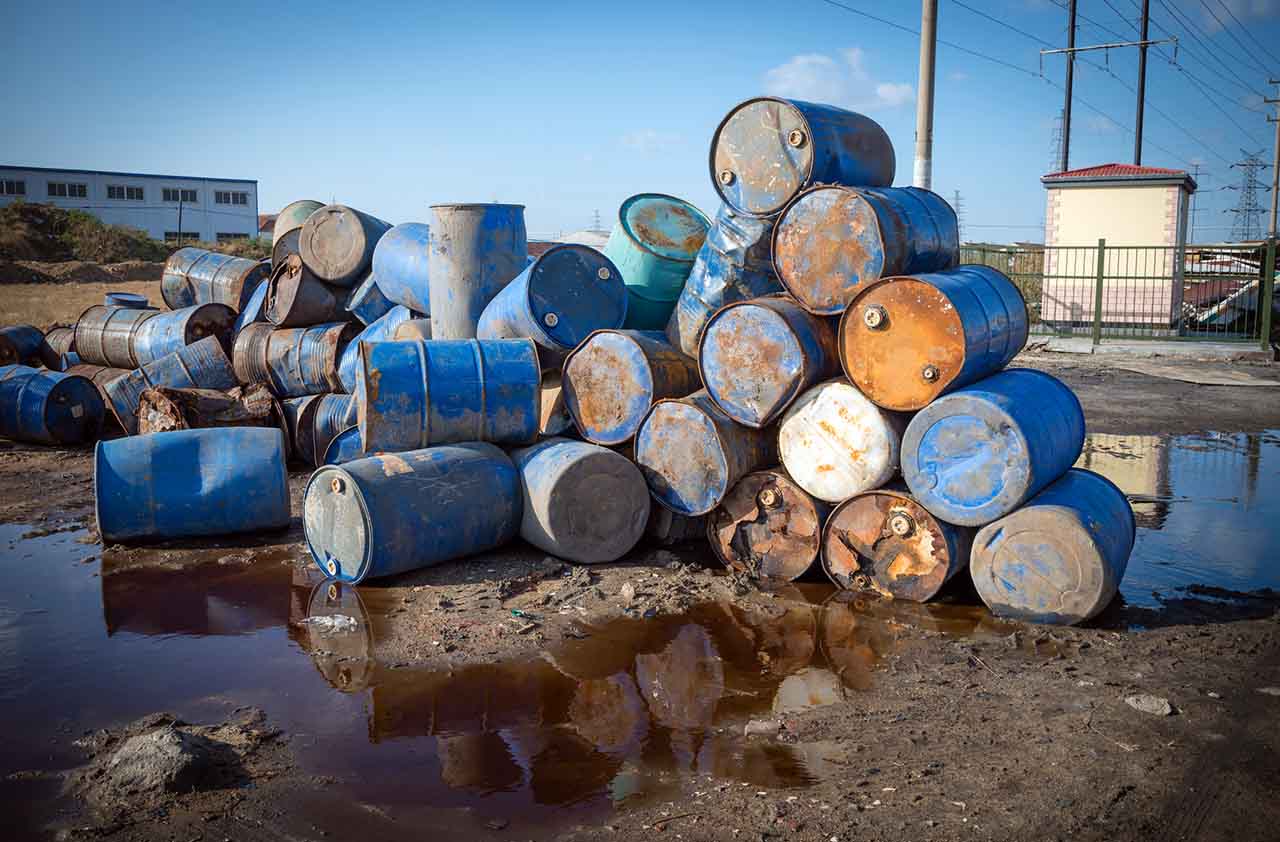How to Invest in Oil Right Now
Regular 25% swings in crude? Negative oil? Here's how to tackle this chaotic period for energy commodities.


These are truly strange times to invest in oil. As if the market gymnastics weren't enough, the price of U.S. crude oil – or at least the front-month futures contract – went negative in April, and not by a trivial amount. At the bottom, West Texas Intermediate was priced below negative $37 per barrel.
Unfortunately, if you're a retail investor, there are limits to how you can profit from this. You can't just show up at the storage sites in Cushing, Oklahoma, get paid $37 per barrel to load up your pickup truck with oil, then promptly dump the barrels on the side of the road as you drive home with your profits.
It doesn't work like that.

Sign up for Kiplinger’s Free E-Newsletters
Profit and prosper with the best of expert advice on investing, taxes, retirement, personal finance and more - straight to your e-mail.
Profit and prosper with the best of expert advice - straight to your e-mail.
If you're an institutional investor or industrial oil trader with legitimate storage and transportation capacity, you can stockpile crude at today's prices, sell it in the futures markets months from now and mint money. But the rest of us have to be a little more creative in how we invest in oil.
Today, we're going to look at some dos and don'ts to show you how to invest in oil the right way.
DON'T: Buy an Oil ETF Without Knowing What You're Buying
The United States Oil Fund (USO, $2.57) might be the worst-conceived investment idea in the history of finance. And yes, we're including the 17th century Mississippi Land Scheme and Dutch Tulip Manias in the list.
USO was that poorly constructed.
You can't buy and hold most commodities, with a few exceptions, such as gold and precious metals. It's generally not practical, so anyone wanting to hold a basket of commodities will generally do so via the futures market. But a futures contract is very different than a stock.
For one, a futures contract has precise expiration date. USO's mandate was to simply buy the front-month light, sweet crude oil futures contract and perpetually roll it over once it expired. So, for instance, it would hold May futures until they expired, then roll those over to June futures.
There's a massive problem with that. Crude oil has been trading in "contango" for most of the past decade. When a market is in contango, longer-dated futures contracts are higher than shorter-dated contracts. If that's confusing, just think of the situation in oil today. No one wants oil today because there is painfully little end demand for it. Therefore, prices are low (or even negative).
But there is demand for oil in the future, so prices are still relatively high if you want delivery in six months or so.
In USO's case, the fund has been perpetually rolling over to more expensive contracts, only to sell them when they approach expiration. In other words, in a contango market, USO will get scalped every month, making less money when oil prices rise and losing more when prices fall.
USO has already had to change its investment mandate multiple times recently to fix these distortions, each time extending its contract exposure further into the future. Those are steps in the right direction, but it's difficult to recommend a fund that keeps changing its investment strategy every few days.
If you insist on playing the oil market with ETFs, consider the United States 12 Month Oil Fund (USL, $10.35). It spreads its portfolio equally over the following 12 months of futures contracts. It doesn't fully escape the contango issue, but it doesn't get utterly slaughtered by it like USO does. Year-to-date, USL has lost 55% vs. a 80% loss in USO.
DON'T: Go Dumpster Diving in E&P
The United States will not stop pumping oil entirely and cede the market to Saudi Arabia and Russia. That's not going to happen. But there will be a shakeout, and it's already happening. Whiting Petroleum (WLL) filed for bankruptcy on April 1, while Diamond Offshore filed on April 27. They won't be the last. Most of the worst-performing stocks of the past 11 years have been in the energy exploration and production sector. Many oil and gas stocks could face a fate similar to Whiting and Diamond Offshore.
Murphy Oil (MUR), Devon Energy (DVN), Range Resources (RRC): All of these should be viewed as highly speculative today. Most will probably escape bankruptcy, but they're still looking at reduced capacity ahead and what is likely to be several more difficult years.
If you want to speculate, by all means, go for it. A moonshot might be just the right move if you're, say, trying to figure out how to invest your stimulus check. Just make sure you're only risking money you can afford to lose.
DO: Focus on Quality and "Pickaxes"
They might not be wildly sexy, but the integrated supermajors are likely your best bet for a long-term recovery in energy prices. These mega-cap energy stocks have the financial strength and the access to capital to survive a long energy drought. Real financial distress is not in the cards any time soon. Yet the stocks are trading at multi-decade lows.
Consider Exxon Mobil (XOM, $43.94). The stock is trading today at prices first seen in 2000 and yields a whopping 8.0%. Depending on how long energy prices remain weak, Exxon may opt to reduce its dividend at some point in the next few years. We can't rule that out. But if you're buying the stock at prices first seen 20 years ago, that's probably a risk worth taking.
Chevron (CVX, $89.71) is in slightly better financial shape than Exxon and a little less likely to cut its dividend. In fact, the company said last month that it expected to keep its dividend intact, come what may from the price collapse.
Of course, you could also go the "pickaxe" route, buying companies that provide services to the industry without having much exposure to energy prices. It's said that the only people who made money during the California gold rush were the shopkeepers selling pickaxes, as the actual miners mostly went bust.
Pipeline operators such as Kinder Morgan (KMI, $15.02) have seen their stock prices collapse this year. But most have limited exposure to energy prices, getting more of their revenues from fixed take-or-pay contracts. Furthermore, most of the major pipeline operators transport far more natural gas than crude oil, and natural gas is still needed to heat homes and power appliances.
If you're going to invest in oil, it's important to remember that today's problems are mostly short-term in nature. It's true that the market is structurally oversupplied, and that doesn't get fixed overnight. But once the economy begins to open up again, energy demand will return to something resembling normal.
Get Kiplinger Today newsletter — free
Profit and prosper with the best of Kiplinger's advice on investing, taxes, retirement, personal finance and much more. Delivered daily. Enter your email in the box and click Sign Me Up.

Charles Lewis Sizemore, CFA is the Chief Investment Officer of Sizemore Capital Management LLC, a registered investment advisor based in Dallas, Texas, where he specializes in dividend-focused portfolios and in building alternative allocations with minimal correlation to the stock market.